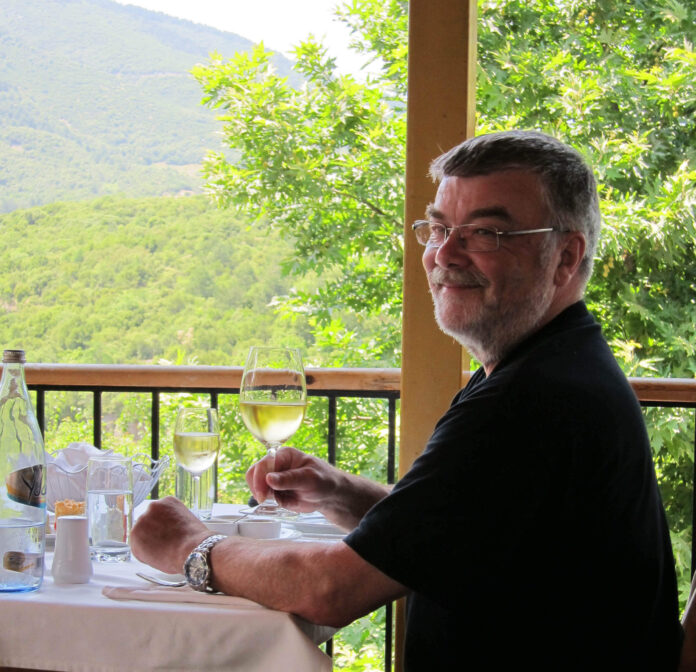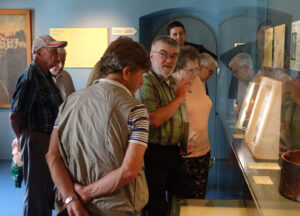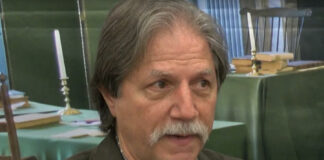
40 years ago, a student of prehistory from Schaffhausen came to the Zurich laboratory for underwater archaeology and dendrochronology in order to complete an internship. Dendrochronologist Kurt Wyprächtiger taught Marcus Höhneisen about the condition a piece of wood had to be in in order to do dendro. And while having coffee during a break, the two men from Schaffhausen started to talk about the Museum zu Allerheiligen. As a passionate hobby numismatist, Kurt Wyprächtiger decried the incorrect and confused descriptions of the coins in the display cases. Marcus Höhneisen, who already worked at the Museum back then, suggested that Kurt Wyprächtiger should correct the errors himself. And the rest is history: Max Freivogel, the museum director at the time, was thrilled about having found a volunteer who did not only start to organise the collection but who also paid the material necessary in order to do so out of his own pocket.

Six Museum Directors and a Foundation
Max Freivogel was the first of six museum directors that Kurt Wyprächtiger got to know during his tenure. One thing never changed: he always had to put a lot of effort into explaining to them why a numismatic collection was important for a museum. He was very fortunate that, only seven years after he started his voluntary activity, Claire Sturzenegger-Jeanfabre set up a foundation specifically designed to purchase works of art for the Museum zu Allerheiligen that could not have been acquired by means of the museum’s pathetic acquisition budget.
Claire Sturzenegger was a great fan of numismatics; therefore, the numismatic collection also received a share of the abundantly flowing funds. Even after Claire Sturzenegger’s death, Hortensia von Roda, the long-standing secretary and current president of the foundation, continued to act in her interest and repeatedly granted funds that Kurt Wyprächtiger made use of in order to expand the collection systematically until it became the world’s largest collection of coins and medals of the city and the canton of Schaffhausen. Moreover, he built a permanent collection of the best quality illustrating the historical background of the monetary system of Schaffhausen.
While doing so, Kurt Wyprächtiger was fortunate that, thanks to his excellent connections to many collectors, several important collections were offered to him. Other collections were sold on the numismatic market and, thus, the museum took part in all major auctions as a bidder. That’s the reason why those who browse through the Sturzenegger Foundation’s list of acquisitions will find numerous well-known names: at this point, we will only mention Edwin Tobler, from whose collection 207 Schaffhausen coins came to the Museum von Allerheiligen, the Köhlmoos, Schulthess, Bernhard Schulte, Kägi and Kunzmann Collections, not to forget the entire Rippmann Collection and the most important pieces of the von Ziegler Collection. Both of them were collections of Schaffhausen coins built up over decades that had been untouched for a long time before the foundation acquired them.

The Coin Trade and the Cleaner
At the latest after the significant purchase at Numisart Roland Michel’s auction held in Geneva on 10 November 1997, the coin trade noticed that there was at least one museum in Switzerland that pursued a very active acquisitions policy and that had the financial means necessary to do so. There were many coin dealers who would have loved to take advantage of this fact.
Kurt Wyprächtiger sometimes tells the story of how a very unflinching coin dealer invited him once to see an off-metal strike in gold of a Schaffhausen medal he wanted to sell him at the price of exactly CHF100,000. Kurt Wyprächtiger said no because he already had this piece in silver in his collection and was sure that there was a better way to invest those CHF100,000. The coin dealer was outraged. He made use of his connection to the cleaning lady of the foundation’s founder, Claire Sturzenegger, and the cleaning lady enthusiastically told her employer about this incredibly exciting piece. The already elderly lady reacted as she always did when the board of trustees did not want to spend money on an expensive object: she offered to buy the piece at her own expense. She was completely surprised when Hortensia von Roda and Kurt Wyprächtiger explained to her why the off-metal strike in gold had not been purchased. At that time, she expressed her complete confidence in her curator: since then, no acquisition recommendation of Kurt Wyprächtiger has ever been questioned again.
Two Exhibitions and a Hoard Publication
Although Kurt Wyprächtiger worked full-time in Zurich and was only paid occasionally by the museum, he organised two extensive numismatic exhibitions: one of them in 1995 and another one in 2000. Furthermore, he initiated the publication on the hoard of Neunkirch published by José Diaz Tabernero and Daniel Schmutz in 2005. He contributed as an author to several publications, especially regarding the Roman Merovingian finds of Schleitheim.
Awards and Honours
In all these years, the numismatic world of Switzerland has been aware of Kurt Wyprächtiger’s work at the Museum zu Allerheiligen. In 1999, for example, he was honoured with the Vreneli Prize of the World Money Fair. In 2006, the Association of Swiss Professional Numismatists awarded him together with the Sturzenegger Foundation the Otto Paul Wenger Prize, the most important numismatic award in Switzerland.
Finally a Permanent Position
Since 1993, the Sturzenegger Foundation has been funding a 20% part-time position for numismatics, which was extended to 40% in 2017. Thanks to this funding, Kurt Wyprächtiger was finally able to systematically catalogue the Schaffhausen coin collection, take photos of the objects and inventory them into the museum’s programme. Therefore, his successor will find a perfectly organised coin collection that he can work with.
One thing is for sure: numismatics will continue at the Museum zu Allerheiligen. Currently it is being discussed what qualifications a numismatist needs to have in order to ensure that the collection is taken care of in the best way possible.
Please find Kurt Wyprächtiger in our Who’s who.
This is the website of the Museum zu Allerheiligen.
Here you will find more information about the Sturzenegger Foundation, too.



